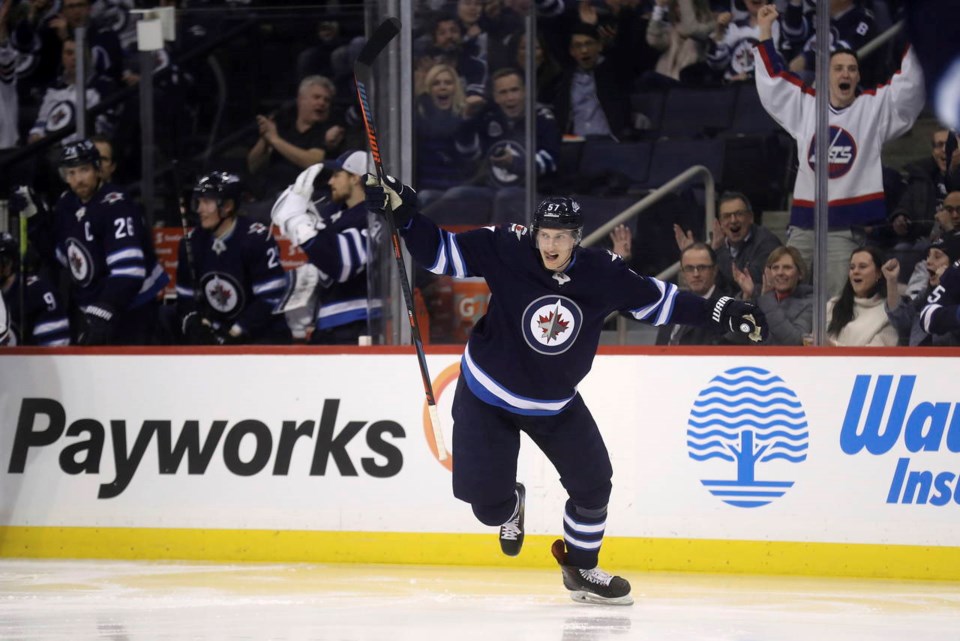The Paper Feature is a weekly column and sidebars that appears in the print edition of the Vancouver Courier newspaper. Track it down!
The Canucks have gotten better this off-season, but their moves haven’t been universally praised. The issue isn’t necessarily the players the Canucks have brought in, but the price they paid to acquire them.
Fans that place stock in analytics were particularly dismayed by the signing of defenceman Tyler Myers. While Myers is an upgrade on the right side, there’s a question of how big an upgrade he actually is, and that upgrade came at a significant cost.
Myers is getting paid like a top-pairing defenceman — his new contract makes him the 22nd-highest paid defenceman in the NHL — but he’s unlikely to provide top-pairing value over the course of his five-year contract. That’s particularly true at even-strength, where his defensive deficiencies undercut the offence he might provide.
There’s one area, however, where Myers might be able to live up to his contract: the power play.
Despite some tremendous young talent, the Canucks’ power play faltered last season, finishing 22nd in the league with a 17.1% success rate. That inability to consistently score on the power play certainly didn’t help the team’s bid to escape the basement and compete for the playoffs.
By the end of the 2018-19 season, the Canucks had scored 219 goals, just one more than the previous year. In other words, they made up for the retirement of Daniel and Henrik Sedin, but didn’t take a significant step forward. A more effective power play would have helped.
One addition Canucks GM Jim Benning made will obviously affect the power play: J.T. Miller has been an effective part of a first power play unit the last two seasons with the New York Rangers and Tampa Bay Lightning. Myers could also have a major impact on the power play; the question is whether he’ll get much opportunity to do so.
The Canucks already have an incumbent defenceman on the first power play unit in Alex Edler, who is coming off a bounceback season where he had 10 goals and 34 points in just 56 games, including 17 points on the power play. They also have hotshot rookie Quinn Hughes, who should quickly find a place on the power play as well.
Is Myers going to leapfrog over Edler and Hughes to find a spot on the first unit? Probably not, but there’s an argument to be made that he should.
Over the past two seasons, Myers is ninth among NHL defencemen in power play points per hour. In other words, if you adjust for ice time, Myers has been one of the most effective defencemen on the power play over the past two seasons.
What’s more impressive is how he gets those points. Myers is first among NHL defencemen in one category on the power play: primary assists, the pass (or shot and a rebound) that leads directly to a goal. In other words, if you’re looking for someone on the power play to set up your snipers — say, Brock Boeser and Elias Pettersson — Myers might be your best bet.
In fact, it might be the only way to get legitimate top-pairing value out of Myers and his contract: taking advantage of Myers’ power play prowess to boost the production of Boeser and Pettersson.
Myers ice time on the power play dropped last season, as Dustin Byfuglien, Jacob Trouba, and Josh Morrissey took up more minutes. That’s understandable — Byfuglien, Trouba, and Morrissey are also very effective on the power play — but it limited Myers’ production. Will the same thing happen in Vancouver as Myers sits behind Edler and Hughes in the pecking order?
Whichever defenceman the Canucks choose to use on the top power play, that means relegating the other two defencemen to the second unit, where they’ll get less ice time and less opportunity. Injuries will likely result in Myers eventually getting a shot on the first unit at some point, but perhaps he should get that opportunity early in the season.
Big Numbers
3.93 - When it comes to primary points — goals and first assists — on the power play, Myers is second only to the Boston Bruins’ Torey Krug over the last two seasons. Myers has put up 3.93 primary points per hour on the power play, though Alex Edler is not far behind at 3.65.
1.2 - It might seem like a solution would be to use two defencemen on the first power play unit, but studies show that power plays with four forwards average about 1.2 more goals per hour than units with three forwards and two defencemen. In fact, some teams last season experimented with five-forward power play units.
Stick-taps and Glove-drops
A tap of the stick to Elias Pettersson for being named the cover athlete for the Swedish release of EA Sports’ NHL 20. “I’ve been playing EA NHL since I was a kid. I’m so honored and excited to represent Sweden as the #NHL20 cover athlete,” said Pettersson on Twitter.
I’m dropping the gloves with EA Sports, however, who won’t be making the Pettersson cover of NHL 20 available in BC to Canucks fans. The Pettersson cover will be exclusive to Sweden, Norway, and Denmark.



